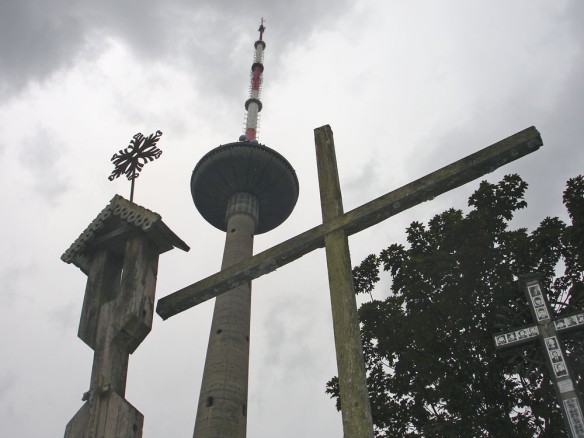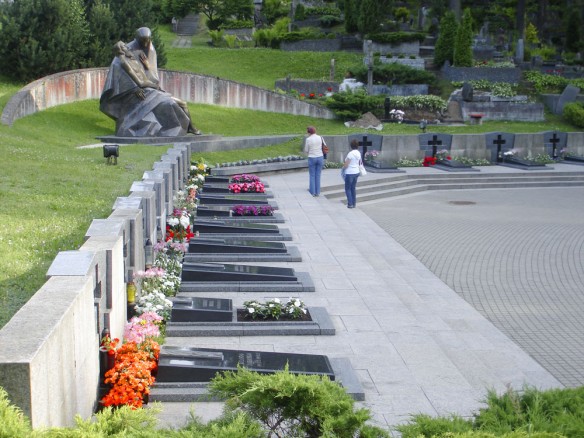Memorials in front of the TV Tower where the bloody Soviet military attack on the freedom defenders took place on January 13.
THE TV TOWER. MEMORIALS AND MUSEUM. VILNIUS
ADDRESS
Sausio 13-osios g.
Located approximately 4 kilometres west of the Old Town.


A small museum on the ground floor of the tower tells of the event. The portrait on the wall on the left is Loreta Asanavičiūtė. This 24-year-old seamstress was the only female victim, and became the most famous. She was run over by a Soviet tank and later died in hospital. The streets around the TV tower have been named after the victims.

Painting from the museum. Artist: Navakas.

From the graves of the victims on the Antakalnio Cemetery. They all received one of the highest Lithuanian awards, the 1st Class Order of the Cross of Vytis. The cemetery is located 2 km north-east of the centre (Old Town). Main entrance from Karių Kapų Road.
THE BLOODY SUNDAY. 13 PEOPLE KILLED BY THE TV TOWER
The Soviet military forces went into crucial action in January 1991. The fiercest attack on independence supporters took place at the Radio and Television Committee building and the TV Tower on 13 January. 13 freedom defenders were shot, one died of a heart attack and a Soviet soldier was shot by a fellow soldier. The following day after this Bloody Sunday, 100,000 people surrounded the parliament and built anti-tank barricades. The Soviet forces retreated.
Lithuania had already declared independence of the Soviet Union in March 1990. The following period was difficult with a weakening economy, energy shortages and high inflation because of economic blockade organized by the Soviet Union. Food prices increased and some products were rationed. The political situation was unstable. The Soviet leaders in Moscow and pro-Soviet groups in Lithuania were dissatisfied with the proclaimed independence, especially the Russian-speaking minorities, supported by the Moscow-backed sector of the Lithuanian Communist Party.
The new government then called on supporters of independence to protect the parliamentary building and other important public buildings, including radio and television centres. Hundreds of thousands of people all over the country responded to this call.